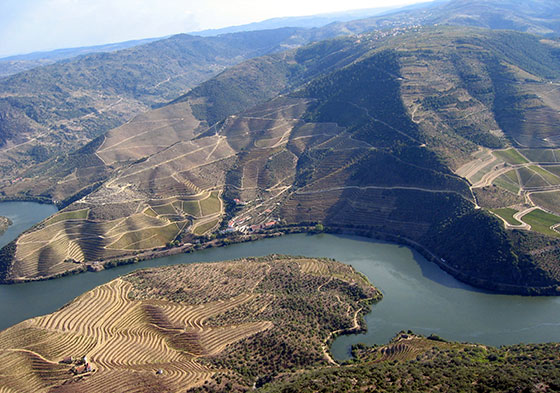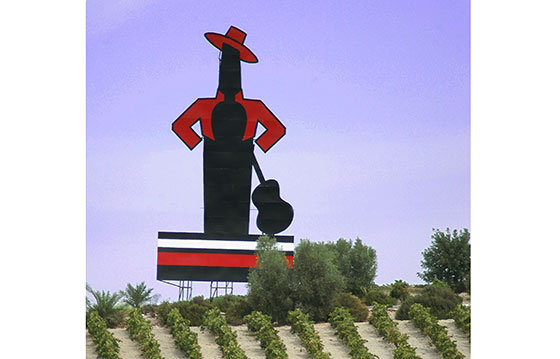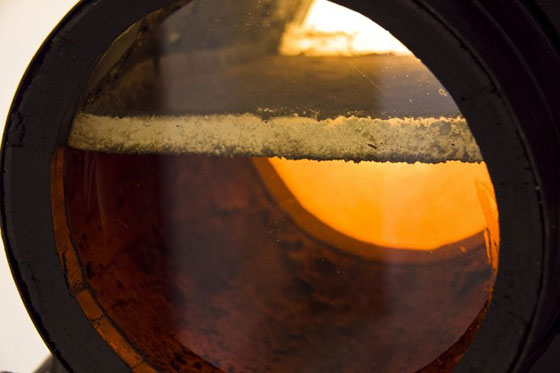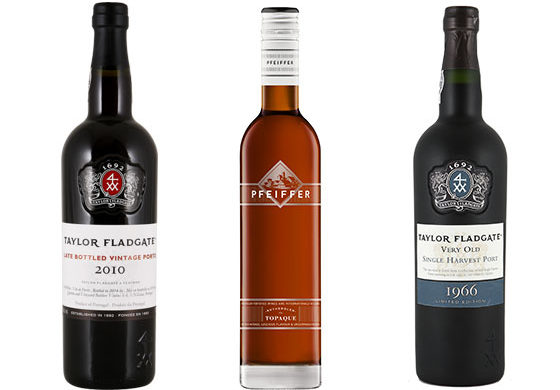Fortified wines offer a snapshot of a region, a taste of history and an ability to communicate a true sense of place. Wines of immense character, these one-of-a-kind styles have evolved over generations of trial and error and dedication to quality.
by Margaux Burgess

During the evolution of winemaking in regions as varied as the Douro Valley, Portugal, Jerez in Spain and the Madeira archipelago, it was discovered that adding neutral grape spirit to the base wine (fortify) created a wine that was able to age longer, was more durable, fuller-bodied and more enjoyable.
The Douro Valley vines cling to centuries-old handmade terraces to produce Port, a legendary classic of the wine world. Touriga Franca, Tinta Roriz, Tinta Barroca, Touriga Nacional, Tinto Cão and Tinta Amarela are the principal grape types used for Port (of the 30 indigenous varieties of the region allowed.)
Port begins its life as a red wine. When the winemaker decides the wine is at the perfect level of sweetness it is time to fortify with aguardente, a high-alcohol neutral grape spirit. This process, like all fortification, halts fermentation by killing the yeasts. This preserves the sugar and hence sweetness.
It may be that no wine is more steeped in history than Port. The history of wine in Portugal dates to before the modern era and Port itself was first recorded in the 17th century. In the 18th century Portugal and specifically Port wine had the benefit of preferential tariffs and treaties with Britain, leading many English, Irish and Scots to set up business in the Douro region—a legacy we see today in the names of shippers and producers such as Graham’s, Warre’s and Smith Woodhouse. After generations of this preferential treatment these benefits were restricted. Port had to evolve. The visionary, if dictatorial, Marquis de Pombal implemented valuable improvements. The most revolutionary of these was the demarcation of the Douro appellation in 1756. This directed the focus of Port to the quality of vineyards, paving the way to Port as we know it today—high quality and highly prized.
Port can be divided into two categories: ruby and tawny. The best quality ruby Ports, such has LBV and vintage Port, possess rich colours and complex flavours. Vintage Port is the most serious offering, comprising only two to three per cent of production and declared only in the best years. Vintage Port can last decades. A venerable British tradition is to gift a case of vintage at birth. To start your own collection look for 2000, 2007, 2009 and particularly 2011, which will be one of the greats.
Tawny Port is aged in the barrel developing more toffee, roasted nuts and dried fruit flavours. Tawny Ports include an age date (10, 20, 30 or 40 years) on the label. This is not an average age of what is in the bottle but is based on taste and the experience of the producer/shipper—if it tastes as a 10-year Tawny should, it will be labeled as a 10-year Tawny.
If there is any one producer whose history is intrinsically linked to the story of port it is Taylor Fladgate. While not the first producer in the region, Taylor Fladgate has, through three centuries of independent family ownership, persevered with a focus on quality and innovation. Taylor Fladgate established late bottled vintage (LBV) Port, creating a wine that was approachable and drinkable much earlier. After four to six years in wood LBV is bottled. The process allows it to take on some of the mellow characteristics of Tawny, yet keep the fruit and structure of a Ruby. Like vintage Port it is always made from a single vintage, but filtered before bottling, ready to enjoy upon purchase.
My own introduction to Port was indeed a glass of Taylor LBV at the end of the meal with my grandmother and her Christmas cake.
You may also come across two other styles of Port: White Port made from white grapes, in both off-dry and sweet versions, rich with primary grape and fruit flavours, is an excellent aperitif served chilled or on the rocks with a slice of orange.
Croft, the first Port house to offer a pink (rosé) Port owes the creation to Australian winemaker Jen Pfeiffer. The fruity, fresh and vibrant flavours with a lively sweetness works as an aperitif or finds a home in cocktails. Jen has since returned home to Rutherglen, Australia where she carries on the fortified legacy at her family winery, Pfeiffer Wines.

Sherry is a wine of complexity and structure unlike any other. The wine hails from the sun-kissed Andalusian coast in the far southwest corner of Spain, in the Sherry Triangle, the towns of Jerez de la Frontera, Sanlucar de Barrameda and El Puerto de Santa Maria.
The path to becoming Sherry is fascinating and complex. While all dry Sherry is from the Palomino grape, it is the aging method that determines what will end up in your glass. When fermentation is complete and the wines are totally dry, the more delicate wines are determined to be best suited for Fino. These are fortified to 15.5 per cent with mitad y mitad, a gentle mixture of grape spirit and mature Sherry. At this point, the barrels are not completely full—room is left for the development of flor, unique to the region. The flor allows the wine to age without air contact creating a refreshing and searingly dry pale wine with notes of citrus, almond and crisp salinity, a perfect aperitif and an excellent match for tricky-to-pair foods such as vegetables, salad and olives.

The not-so-delicate wines are fortified to around 17 percent. Due to the higher alcohol the flor does not grow, which allows contact with oxygen and the development of dried fruit, walnut and woody flavours. These fuller-bodied dry Amontillado and Oloroso sherries are a perfect match for heartier fare such as venison and pork cheeks.
All styles of Sherry are aged in a solera system, a unique way of blending the wine with new wines from each vintage topping up older stocks. This guarantees a continuity of quality, style and remarkable value. Even entry level Sherry is in excess of four years of age with much of it being considerably older.
The vast majority of Sherry is dry. Look for the words Fino, Manzanilla, Amontillado or Oloroso on the label. Cream, Medium, and Abacado are sherries sweetened with raisined Pedro Ximinez grapes.
The Madeira archipelago, the birthplace of both Ronaldo and Madeira, the world’s longest-lived wines, lies about 100 km off the coast of Portugal. Madeira is impervious to the damage that heat and oxygen wreak on other wines due to unique aging processes called canteiro and estufagem. These mimic the repeated heating and cooling effects of the ocean voyages of Portuguese captains visiting the many territories of their homeland.
The must is fortified with a 95 per cent grape spirit added as soon as a few hours after fermentation begins. After fortification, the wine aging—based on the historical shipboard aging under the tropical sun—begins. The estufagem process starts with heating the wine via hot water coils for three months, with further aging in wooden casks. During the artisan canteiro process, the wine is cask-aged for at least two years in actual attics, exposing the wine to natural warming and cooling. This slower process produces complex and refined flavour characteristics.
There is Madeira for any occasion—look for Sercial with its citrus and almond notes if something dry is desired. Toffee and vanilla-scented Malmsey is the sweetest style and best saved for dessert. In between are the smoky, medium-dry examples made from Verdelho and the rich and aromatic Boal with characteristics of cocoa, nuts and espresso.
Rutherglen, Victoria may have a shorter history than Port and Sherry but it is no less storied. Rutherglen Topaque (formerly called Tokay) is the only fortified wine made from Muscadelle, an antique French grape that found its way to Australia generations ago. Try the complex and luscious Pfeiffer Rutherglen Topaque, luscious and rich with notes of toffee, caramel and butterscotch tempered with brewed tea notes. Look for Rutherglen Muscat if you prefer more treacle and chocolate notes.
Fortified wines are one of the great treasures of the wine world. They intimately communicate the soul of a region and allow you to take a step back in time. With a glass of fortified wine, be it Port, Sherry, Madeira or any other, you are tasting history and enjoying wine as it was enjoyed more than a century ago.

Moscatel de Setúbal
The port town of Setúbal on the sunny coast of Portugal, south of Lisbon, is home to a historic fortified wine. The wine is fortified during fermentation and the skins are added back to soak in the wine for up to six months or longer, adding aroma and complexity. Enjoy pineapple upside down cake with a glass of Casa Ermelinda and forget the wintry weather.
Vins Doux Naturel (VDN)
Vins doux naturel are made by a process called mutage, developed in the south of France during the 13th century. Grape spirit is added near the end of fermentation then aged, resulting in a wine of 15-18 per cent alcohol that is sweet, yet balanced. Styles vary. Rivesaltes, made from Grenache, Grenache Blanc and Grenache Gris is rich with notes of toffee, butterscotch, raisin and baking spice due to its oxidative aging, often in wood, ideal with crème brulee. Muscat de Beaumes de Venise is completely different, with bright and fresh grapey notes—an elegant aperitif or elevate a dish of fresh fruit simply by pouring some over the top. Chapoutier offers a classic version.
Vermouth
Vermouth is called an aromatized wine. Flowers, herbs and other botanicals contribute flavour and aroma characteristics to a wine that has been fortified with alcohol. Vermouth was considered medicine and we still enjoy vermouth for its ability to open the appetite or aid digestion. Dolin from Chambéry is a classic French producer that crafts several vermouths using a secret herb and spice blend.